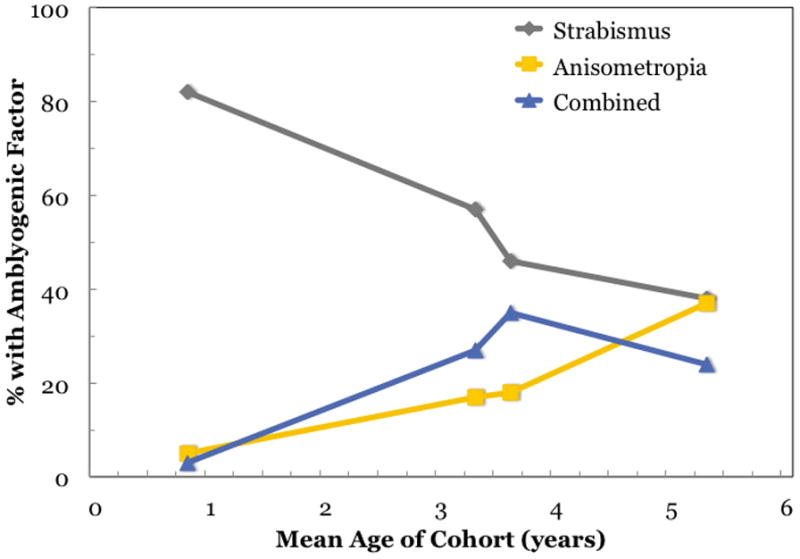Figure 2.

Strabismic amblyopia was diagnosed much more commonly than anisometropic or combined-mechanism amblyopia in children<3 years of age.(Birch and Holmes, 2010) This finding is in sharp contrast to the PEDIG report of approximately equal proportionsof patients with amblyopia attributable to strabismus and anisometropia, and approximately a quarter of the amblyopic patients exhibiting both.(Pediatric Eye Disease Investigator Group, 2002a) Two UK studies of amblyopic children, which included younger children than the PEDIG study, found the cause to be strabismus in a greater percentage than the PEDIG study (45%–57%), a lower percentage to be anisometropic (17%), and about the same percentage to be combined mechanism (27%–35%).(Shaw et al., 1988; Woodruff et al., 1994b) This summary of all 4 studies suggests that one source of the differences in the proportion of amblyopia attributable to strabismus may be age.
